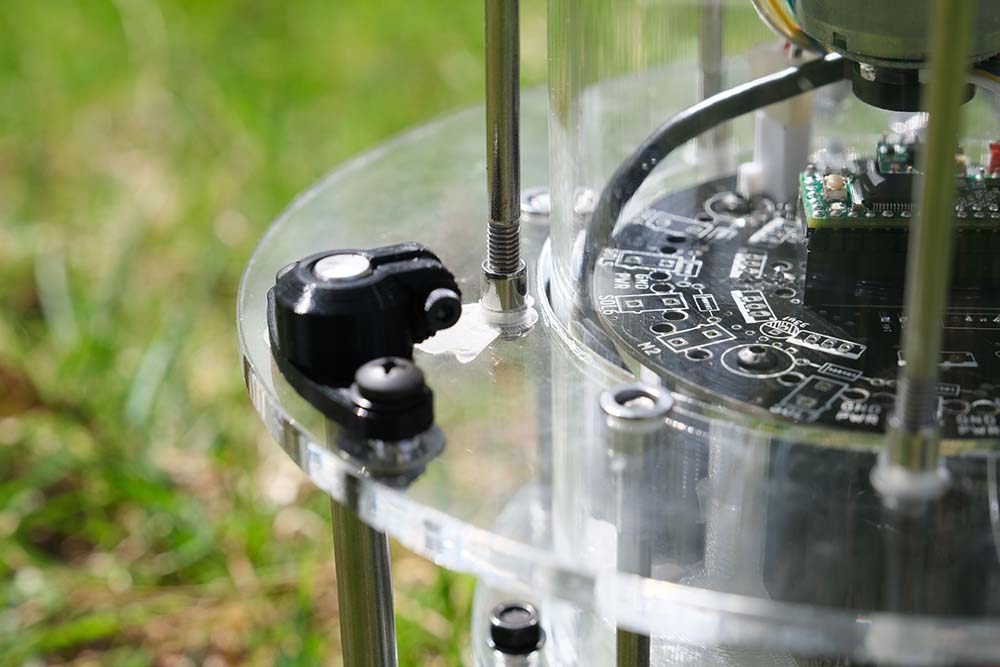Explorator spinner Installations

Write-up coming soon...

Write-up coming soon...
Realisations
Spinner was installed in numerous targeted test exhibits intended to troubleshoot the artefact’s vocalisation routines around the Sierra Nevada Foothills starting in February 2021, with the most significant expedition conducted on March 29th, 2021. During installation, Spinner’s vocalisation mechanism created significant rotational torque, which, combined with the artefact’s light weight, can result in physical movement. While the power system could have transitioned to using lead-acid batteries to increase artefact weight and stability, the modular foot system solved the problem without decreasing transportability. For these installations the modular feet were invaluable at eliminating artefact movement by anchoring the artefact in gravel and sand with pointed feet and stability on solid surfaces through the use of flat feet. Spinner exhibited improved environmental resistance due to an updated bottom-cap and increased use of weather-resistant materials such as acrylic. While more in-situ testing is desired, initial installations found that Spinner holds the most potential when installed in locations where a small amount of natural geophony is present but does not dominate the sonic environment. When Spinner is installed close to the geophony source, it reinforces these sounds, allowing them to occupy a more significant portion of the soundscape and become more noticeable. Furthermore, this approach supports listening to the in-situ sonic environment as when participants investigate the species they are also investigating the natural source of geophony. Spinner serves as an effective mechatronic-based soundscape augmentation artefact capable of producing geophony-inspired cochlear vocalisations in reaction to real-time environmental conditions and is therefore a successful Explorator species.